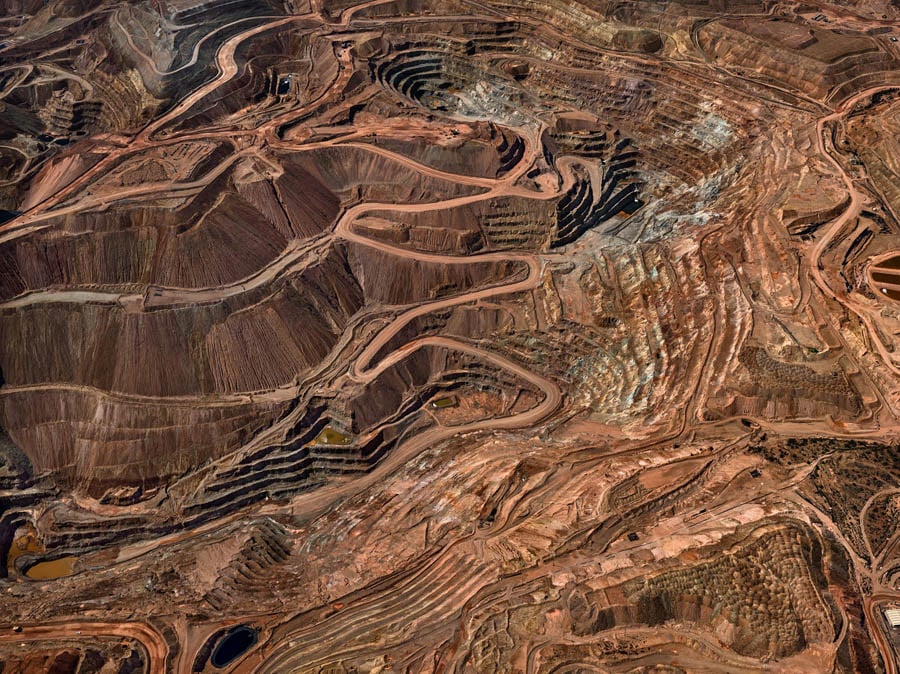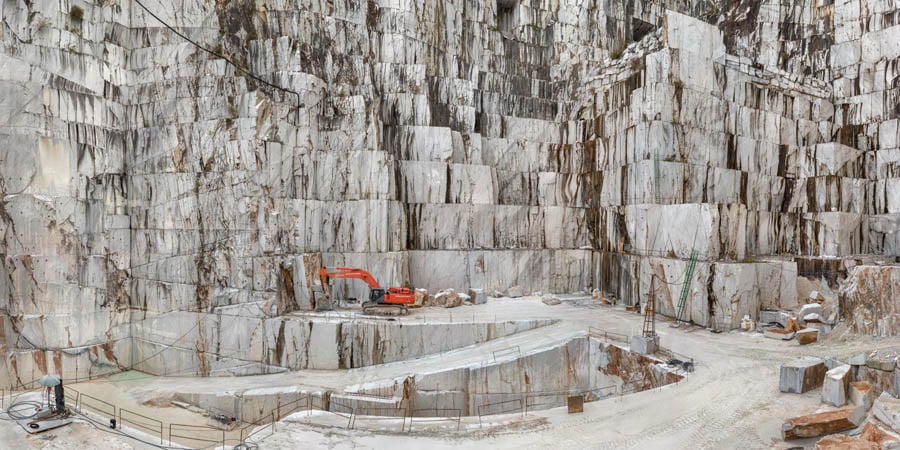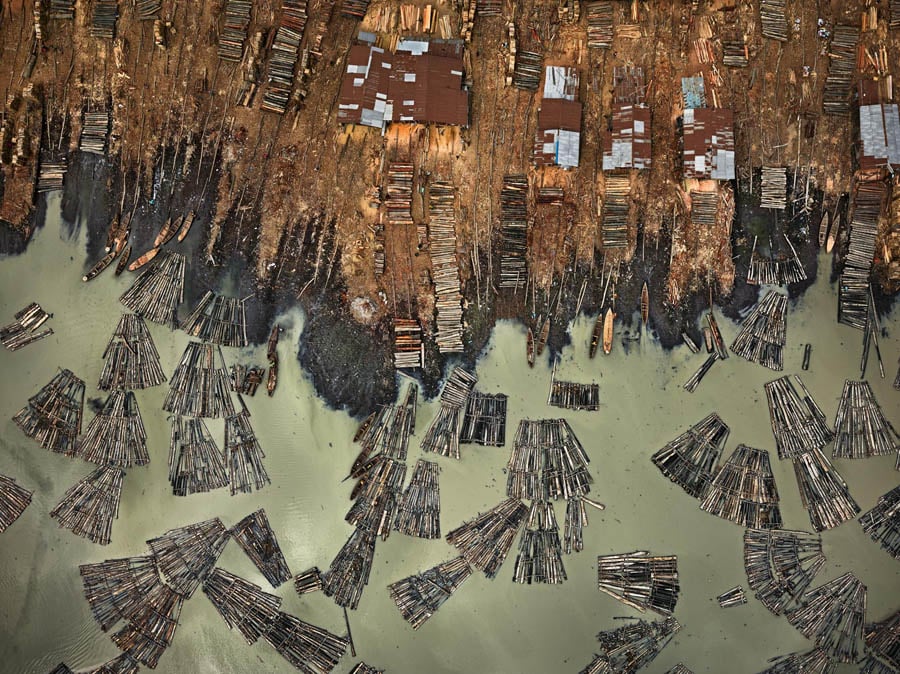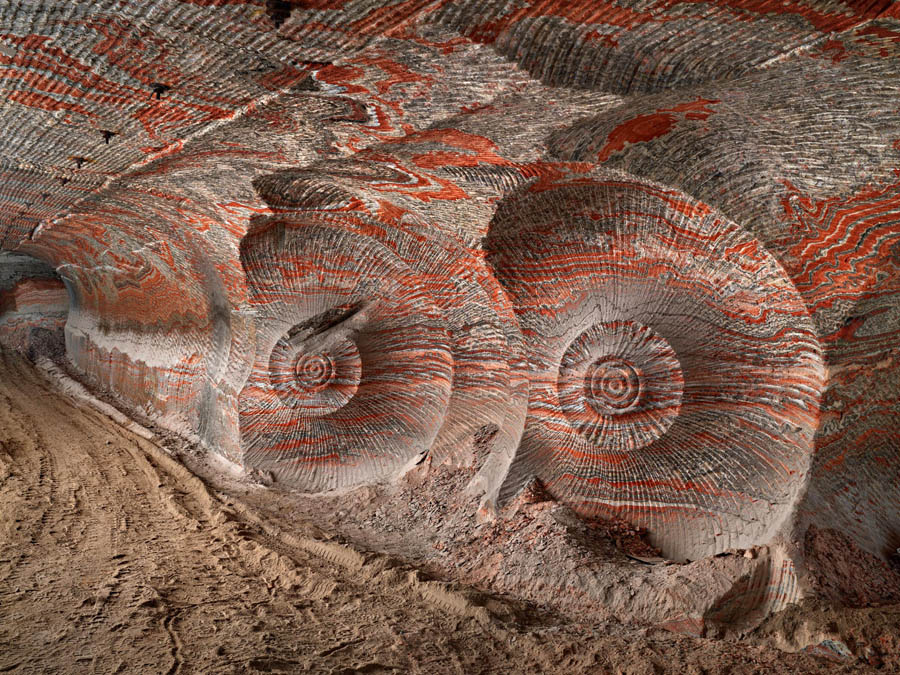
November 14, 2019
This Stunning Exhibition Examines Humankind’s Impact on Earth
Anthropocene, a radical multisensory media exhibit, runs through January 5 at MAST Foundation.

In the exhibition Anthropocene, there are aerial photos of a snow-dusted open-pit coal mine in Wyoming, a sawmill cutting its way through deteriorating lowland rainforests of Nigeria, and heliostat mirrors in a sublime formation at a solar plant in Spain. Sinister yet strangely beautiful, these obscure scenes lend us a view that we might not otherwise have: a vantage point to start to understand how profoundly the planet has been altered by humans.
As the story goes, Anthropocene, which opened May 16 in Bologna, Italy, is the result of a collaboration that began in 2014 with three Canadian artists: photographer Edward Burtynsky, and filmmakers Jennifer Biachwal and Nicolas de Penciler, and was first shown at the National Gallery of Canada. The trio spent the years leading up to the exhibit trying to answer a prompt now written in the introduction of the exhibition catalogue: “…how to give compelling aesthetic form to the evidence that has aggregated in the geological record through persistent and globally interconnected human activity.” This work closely follows the research of an international group of scientists, the Anthropocene Working Group, who are investigating the effect of human incursions, that, in their own words, are so immense in their scope that they will “endure geological time.”

This type of inquiry lies at the heart of the Anthropocene itself, a name given to the contemporary geological era defined by human alteration of topographies worldwide. According to the curators, the exhibition’s images of landscapes impacted by human activity make the case that we have left the Holocene era behind—a transition documented in 35 large-scale photographs, four monolithic murals, and an interactive, augmented-reality app by AVARA.
Now on view at MAST Foundation in Bologna through January 5, 2020 the exhibition occupies three galleries and one auditorium. The imagery is breathtaking, menacing, even surreal. In a gallery, Burtynsky’s ominous photos capture oil bunkering in the Niger Delta, coal mines and petrochemical refineries in the United States, deforestation in Patagonia, and other culprits of pollution. Meanwhile, in the foyer, Biachwal and de Pencier’s three video installations detail a Texas oil refinery, the Great Barrier Reef, and a Florida phosphate mine. Then, in the depths of the basement gallery, a dark curtained section houses an installation of elephant tusks confiscated from poachers in Kenya, violently burning on a loop.

Harnessing these kinds of experimental technologies—be they augmented reality or aerial drone photography—Burtynsky, Biachwal, and de Pencier explore new modes of storytelling. As individual works, these images are innately immersive and visceral, but they’re even more so as a collective. They act as a sort of memorial to document the conditions of the earth as it was, is, and will be. In its entirety, Anthropocene has the same lasting effect of a single photo: a powerful record of its content.
Anthropocene is now on view at MAST Foundation in Bologna through January 5, 2020.
You may also enjoy “BIG’s Kistefos Museum Puts a “Twist” on Conventional Art Galleries.”
Would you like to comment on this article? Send your thoughts to: [email protected]











